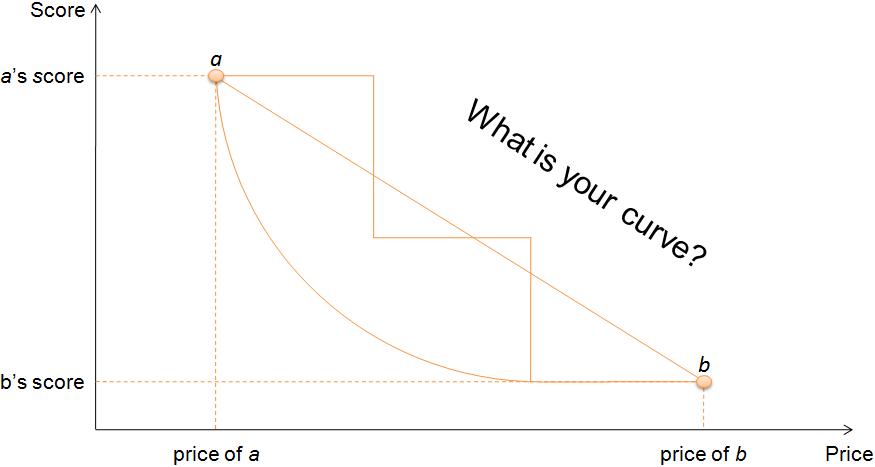 English
English Français
Français
Introduction
Basing a decision process on raw data can distort its result. Indeed, different aspects can influence the calculation such as:
- the units;
- the range of the values;
- the spread of the values;
- ...
Furthermore, the way these data are perceived may be different for each decision maker. That's why using methods based on raw data only, such as the weighted sum for instance, can be inefficient when considering complex problems.
Preference Modeling
A good advice is therefore to use preference modeling. Let's consider the following examples of two products with a price difference of 10€!
Example 1
Do you prefer a over b ? How much do you prefer a over b? |
Example 2
Do you prefer a over b? How much do you prefer a over b? |
So What?
These 10€ of difference most probably do not have the same impact in the two cases. That is why you need to be able to take the relative into account. That can be done with preference modeling. D-Sight allows you to do it in two different ways:
This step is very important in multi-criteria evaluation processes. It allows you to specify how you want to discriminate the alternatives. Continuing with the example above, the graph below highlights how one could model the preference on the price.

If you would like to know more, have a look at D-Sight's inside methodology!
